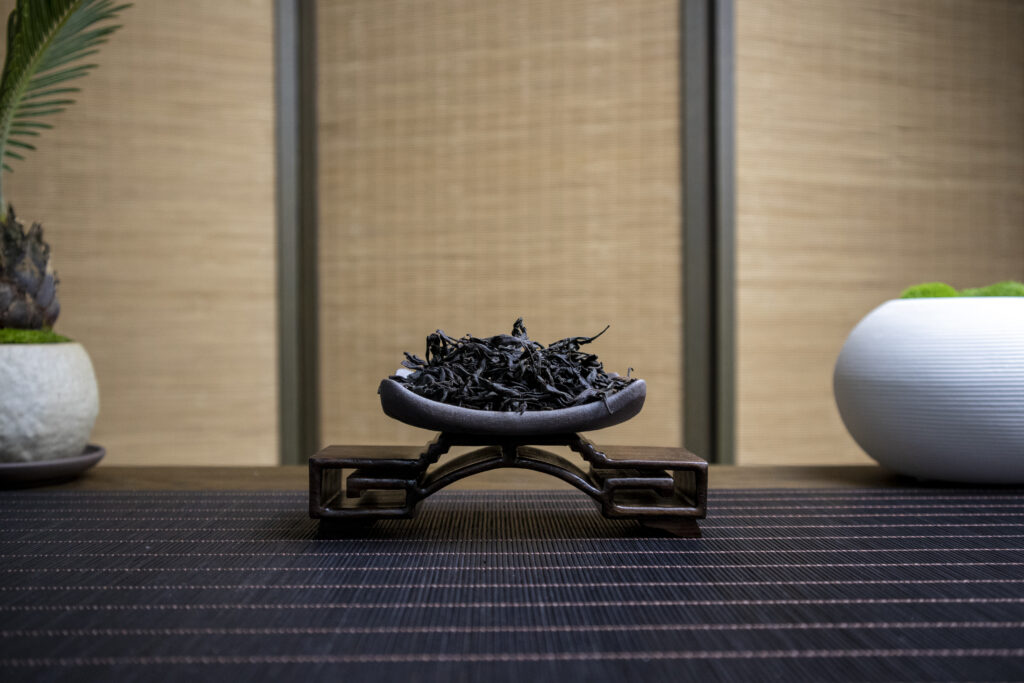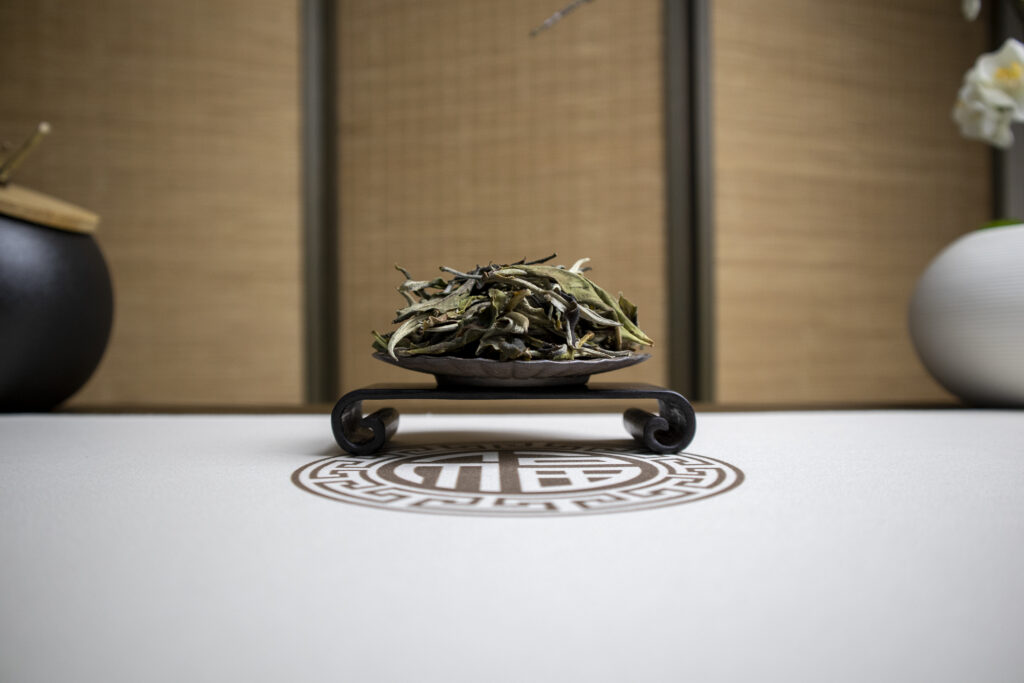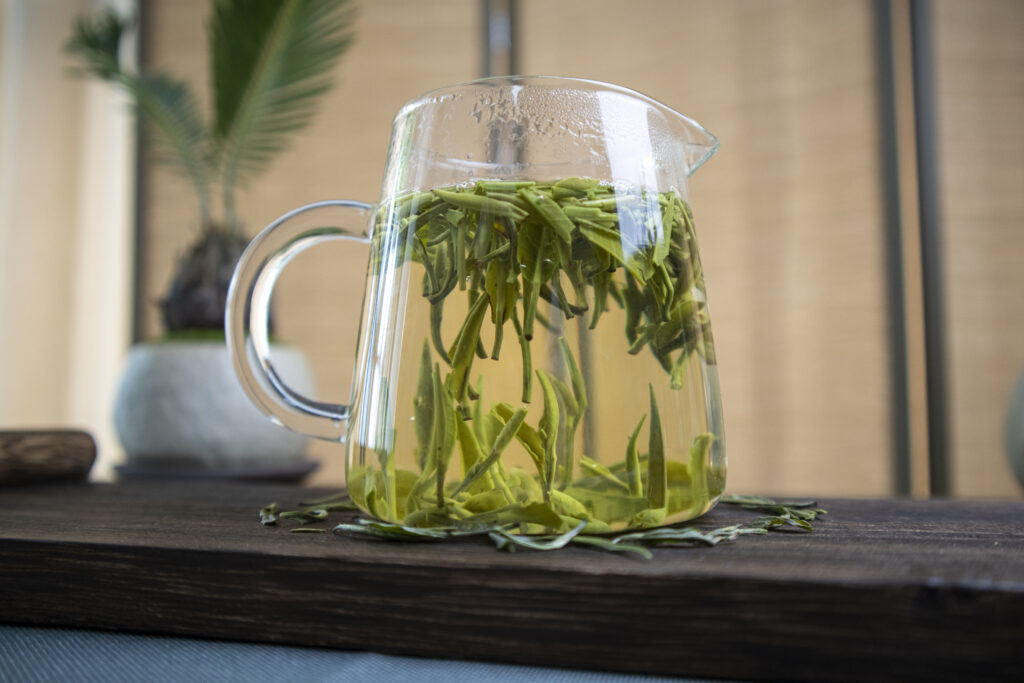Tales in a Teacup:
Brewing Chinese Tea
Journey into the World of Chinese Tea Brewing.
Chinese tea, an elixir that transcends time, culture, and borders, embodies an ancient artistry that has captivated hearts for millennia. As steam gently rises from a porcelain cup, carrying with it the aromatic whispers of tradition, one is drawn into a world where every sip tells a story.
Rooted deep within China’s cultural tapestry, the art of tea brewing has woven itself into the very fabric of daily life. Its history is a tale of reverence, passed down through generations, evolving from a simple beverage to a revered ceremony—an art form that transcends mere consumption.
Within the realm of Chinese tea, an expansive spectrum of flavors, aromas, and brewing techniques exists, each variety a testament to the land it hails from, the hands that carefully cultivate it, and the legacy it carries.
In this journey, we embark on an exploration of Chinese tea brewing, unveiling the intricacies and nuances that distinguish white, black, green, and Pu-erh teas. Each category offers a unique sensory experience, a glimpse into the cultural heritage and craftsmanship that defines Chinese tea culture.
Join us as we immerse ourselves in the subtle elegance of white tea, the bold richness of black tea, the refreshing simplicity of green tea, and the aged elegance of Pu-erh, unveiling the secrets and rituals that transform a simple leaf into a transcendent elixir.
This voyage is not merely a guide; it’s an invitation to savor the essence of Chinese tea—an invitation to understand, appreciate, and partake in a tradition that continues to enchant and inspire tea lovers around the world.
Pu'er Tea:
普洱茶

Aged Elegance
Overview:
Pu’er tea, revered for its aged complexity and unique fermentation process, stands as a pinnacle of Chinese tea craftsmanship. It’s available in two primary forms: raw (sheng) and ripe (shou), each undergoing distinct processing methods that contribute to their individual characteristics.
Brewing Techniques:
Brewing Pu’er tea varies significantly based on whether it’s raw or ripe. For raw Pu’er, use water around 85°C (185°F) to 95°C (205°F) and steep for short intervals, typically starting at 7 seconds to 15 seconds for initial infusions. Ripe Pu’er, being more fermented, can withstand higher temperatures around 100°F (212°C) and longer steeping times ranging from 2 to 5 minutes.
Flavor Profile:
Raw Pu’er often boasts a complex and evolving flavor profile with earthy, floral, and sometimes fruity notes. Its taste tends to transform and deepen with age, offering a more nuanced experience over time. Ripe Pu’er, on the other hand, exhibits a smooth, mellow flavor profile with earthy, woody, and sometimes chocolaty undertones due to its fermentation process.
Pu’er tea is revered not just for its taste but also for its ability to age and evolve, making it a treasure for enthusiasts seeking an intricate and aged elegance in their cup.
Black Tea:
红茶

Bold & Robust
Overview:
Among the diverse spectrum of Chinese teas, black tea stands distinguished by its boldness and robust flavors. Unlike its less oxidized counterparts, black tea undergoes complete oxidation, resulting in its characteristic dark color and rich taste. The oxidation process, where the leaves are fully exposed to air, gives black tea its full-bodied and complex profile.
Brewing Techniques:
Brewing black tea requires water heated to a higher temperature compared to other teas, around 93°C (200°F) to 100°C (212°F). Steep the leaves for 3 to 5 minutes, depending on desired strength. Black tea allows for flexibility in brewing; some prefer longer steeping times for a bolder flavor, while others opt for a shorter infusion for a milder taste.
Flavor Profile:
The flavor profile of black tea embodies a spectrum of robustness, often featuring malty, earthy, and sometimes fruity notes. Varieties like lapsang souchong offer a distinctive smoky flavor due to its unique drying process, while keemun presents a wine-like complexity with hints of cocoa.
Black tea is revered for its strength and versatility, making it an excellent choice for those seeking a bold and invigorating cup of tea.
White Tea:
白茶

Subtle Elegance
Overview:
White tea stands out as one of the most delicate and minimally processed varieties of tea. Its subtlety and gentle flavor profile make it a beloved choice among tea enthusiasts seeking a nuanced drinking experience. The leaves undergo minimal oxidation and processing, allowing them to retain their natural state and delicate flavors.
Brewing Techniques:
Brewing white tea requires a delicate touch to unlock its subtle flavors. Use water heated to around 80°C (175°F) to 85°C (185°F), which is cooler than boiling water. Steep the leaves for about 2 to 3 minutes, though this can vary based on personal preference and the specific white tea variety. It’s essential to use a glass or ceramic vessel to allow the leaves to unfurl and infuse properly.
Flavor Profile:
White tea offers a delicate, almost ethereal taste with hints of sweetness and floral or fruity notes. The flavor profile can vary based on the type of white tea. For instance, Silver Needle (Baihao Yinzhen) presents a subtle sweetness with a floral aroma, while Bai Mudan (White Peony) offers a slightly stronger flavor with notes of melon or honey.
White tea is often associated with tranquility and simplicity, and its brewing process is designed to preserve its delicate nature, resulting in a soothing and elegant cup of tea.
Green Tea:
绿茶

Refreshing Simplicity
Overview:
Green tea, celebrated for its refreshing taste and unoxidized nature, holds a special place in Chinese tea culture. Unlike black tea, green tea undergoes minimal oxidation, preserving its natural green color and fresh, grassy flavors. Its delicate processing allows the leaves to retain their vibrant and subtle characteristics.
Brewing Techniques:
Brewing green tea requires a more delicate approach. Use water heated to around 71°C (160°F) to 82°C (180°F), as using boiling water can scorch the delicate leaves, resulting in a bitter taste. Steep the leaves for 1 to 3 minutes, depending on the specific type of green tea and desired strength.
Flavor Profile:
Green tea offers a crisp, vegetal taste with hints of grassiness and sometimes floral or nutty undertones. Varieties such as Longjing (Dragonwell) present a chestnut-like sweetness, while Sencha embodies a grassy freshness with a slight astringency.
Renowned for its health benefits and refreshing nature, green tea provides a soothing and revitalizing experience, making it a beloved choice for both its taste and wellness properties.

